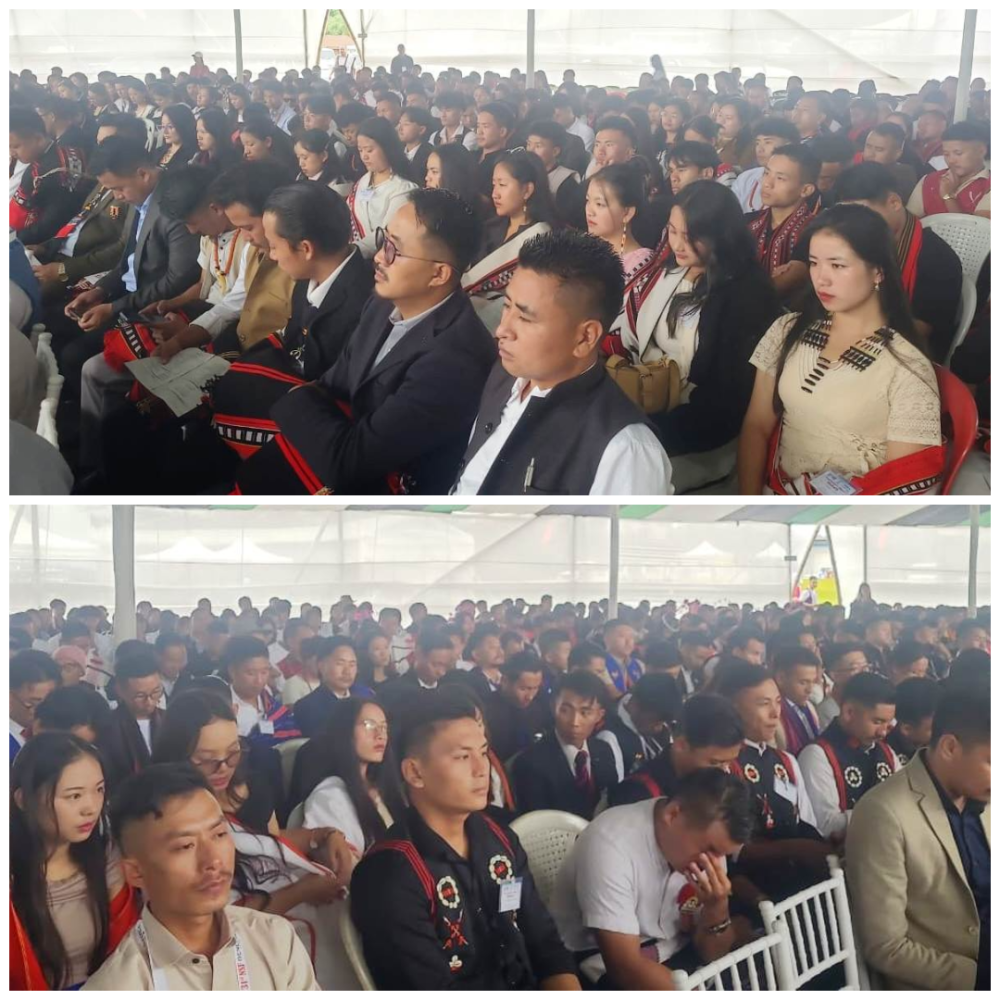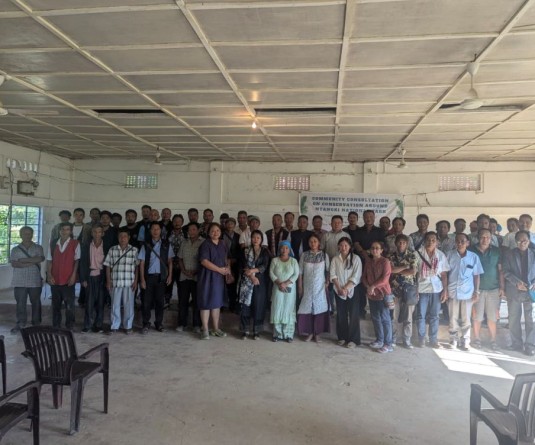Section of gathering at the 31st General Conference of Naga Students' Federation held at Tseminyu. (Morung Photo)

TSEMINYU, AUGUST 29 (MExN): Speaking at the 31st General Conference of the Naga Students’ Federation (NSF) in Tseminyu on August 29, Aküm Longchari, Publisher of The Morung Express offered not just words of encouragement but a framework — five interventions that he argued were critical if Nagas are to move through what he described as a difficult phase of “dissipation” into a period of creation.
Speaking on the theme ‘Resilience in Transition,’ on August 29, he called upon the Naga people to take ownership of their future. The first intervention, he said, required a conscious act of self-emancipation. “This will positively influence the process of transition by deciding to stop being a victim, ending the politics of victimhood, and healing ourselves from being addicted to the pains of the past,” Longchari told the audience. He urged a re-examination of Naga history, politics and geography through what he called a “decolonising lens” that would allow new narratives and stories to emerge from a Naga perspective, rather than through colonial or state-centric frameworks.
Such a shift, he argued, would also require a culture of critical questioning. “What the health of the Naga society is? What are the social dynamics? What has changed in our relationships?” he asked. Staying with these conversations, he suggested, was a form of resilience in itself.
The second intervention turned to knowledge production. Longchari noted that colonial systems had historically distorted and commodified Indigenous life, leaving a legacy that continued to shape perceptions today. “The recovery, restoration and refining of Naga Indigenous knowledge systems is a fundamental ground-up process to confront the violence of knowledge,” he said.
Reclaiming and nurturing such systems, he argued, could support cultural resilience while forging “genuine value-based solidarity and cooperation among Nagas.” This, he said, was less about nostalgia and more about building a common vision anchored in local values rather than imported models.
The third intervention went directly to the wounds of history. Longchari called for spaces of truth-telling, reflection and accountability. “Nagas need to honestly begin asking ourselves, how have I, or my community, contributed to the crisis,” he said. He said this was not just about exposing past wrongs but about how truth is communicated. “When truth is spoken offensively, it is received defensively,” he said. “For truth to heal, it needs to be spoken respectfully and diplomatically in love to kindle a healing solidarity by rehumanizing each other.” Such a process, he suggested, could allow Truth, Justice, Mercy, Forgiveness and Peace to converge in practice — not as abstract ideals but as lived realities.
The fourth intervention took aim at the way peace has been managed in Nagaland. State-driven initiatives, he argued, had too often been designed to impose order without addressing deeper causes of conflict. What was needed instead, he said, was a “holistic and liberative paradigm” of JustPeace, built from the grassroots.
“Our situation needs a holistic and liberative paradigm where long-term enduring peace is pursued through the lens of justice using a methodology of reconciliation,” Longchari said. He called for broad participation, especially at the community level, to ensure ownership of the process.
That, he stressed, required patience and long-term commitment. “It needs statesmanship, humility, sincerity and tenacity to build bridges, to mend broken relationships, to collaborate and agree on a strategic plan that connects with the vision of a shared humanity,” he said.
The final intervention looked at structures of governance. Longchari argued that since its creation, Nagaland had been shaped by patrimonial rule — systems of power centred on individuals and networks of patronage rather than democratic institutions.
“As a result, issues of systemic corruption are common symptoms of a system that is inherently weak in principles of transparency, accountability and substantive justice,” he said. The way forward, he insisted, lay in strengthening participatory democracy and creating institutions that reflected Nagaland’s history, politics and geography. “Attaining this will ensure that Nagas are no longer spectators but become co-creators by taking ownership of the process and becoming involved in decision making processes that affect their futures,” he said.
Longchari returned to the idea that the Nagas were “stuck” between speculation and dissipation — unable to move forward to create the new. The five interventions, he argued, offered a pathway out of this paralysis. “Transformation begins when we build relationships of mutual trust and respect, where the web of relationships also includes those who you do not agree with,” he told the gathering.
He said resilience was not just about enduring hardship but about actively reshaping the future. The challenge, as he framed it, was whether Nagas were ready to take ownership of that process — to stop “listening with our eyes,” as he put it, and begin listening with openness.




